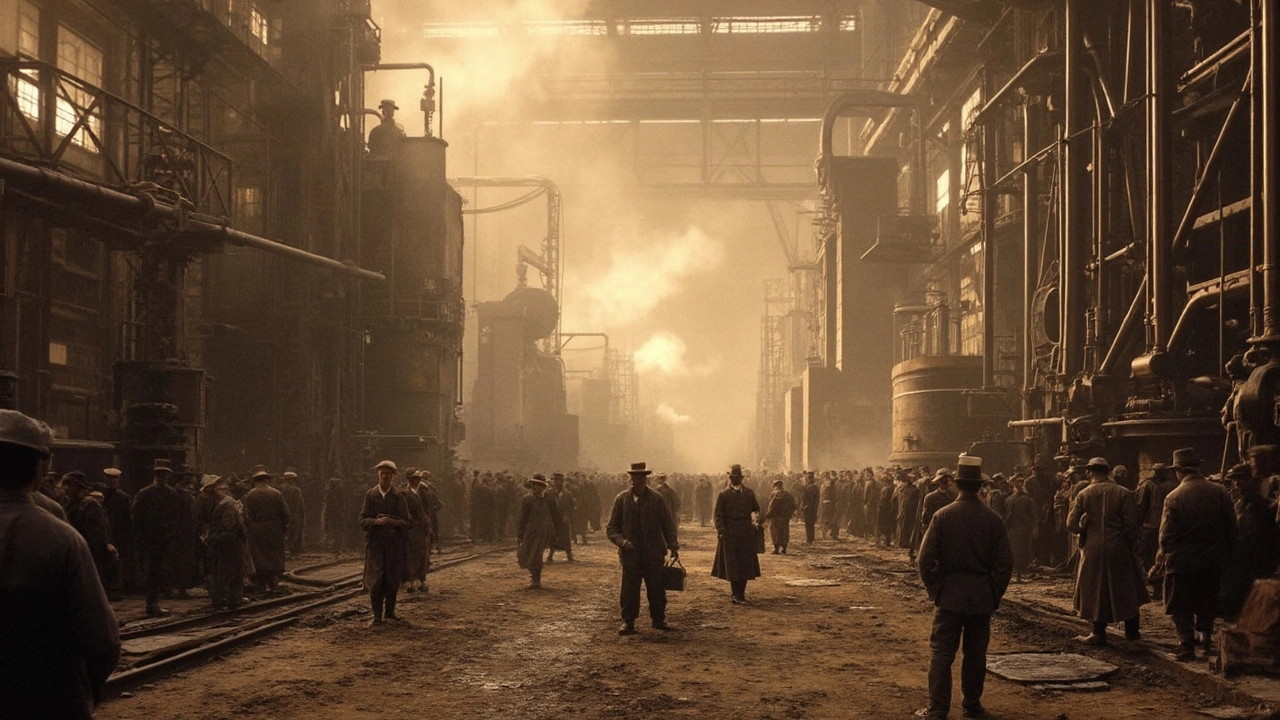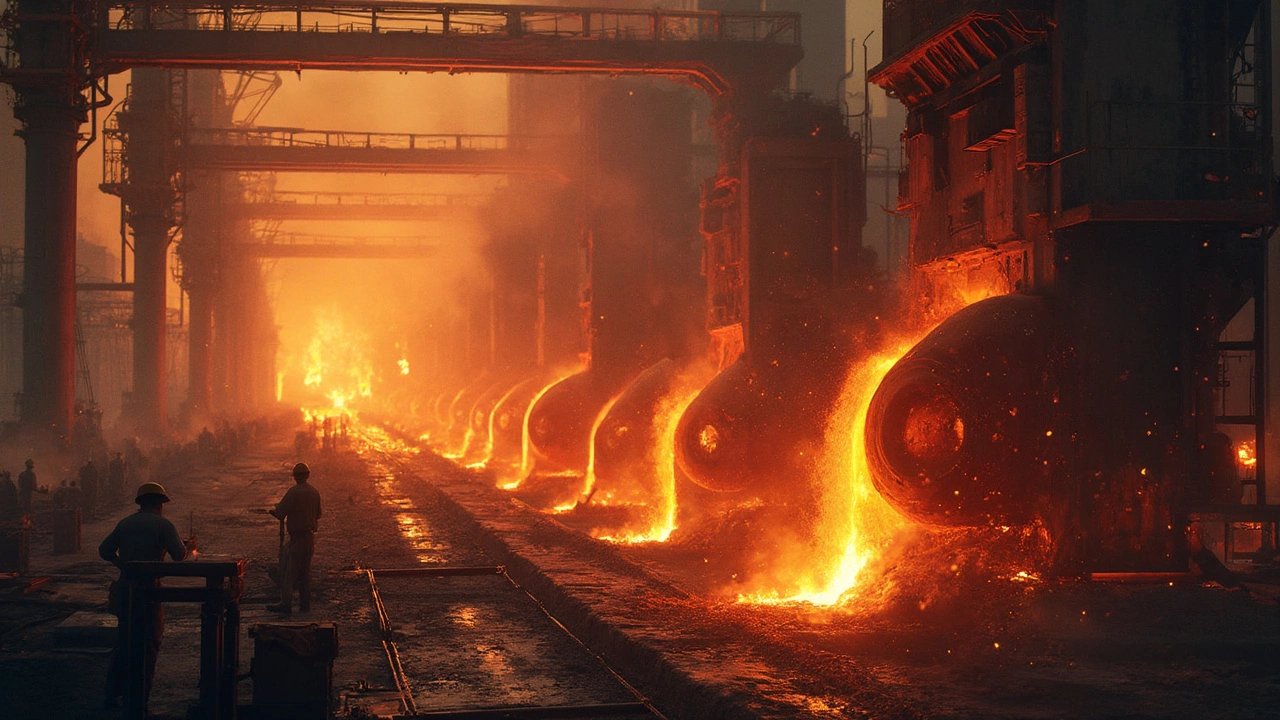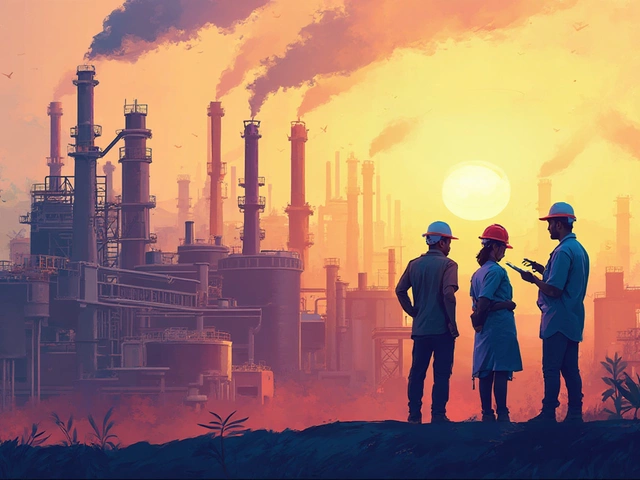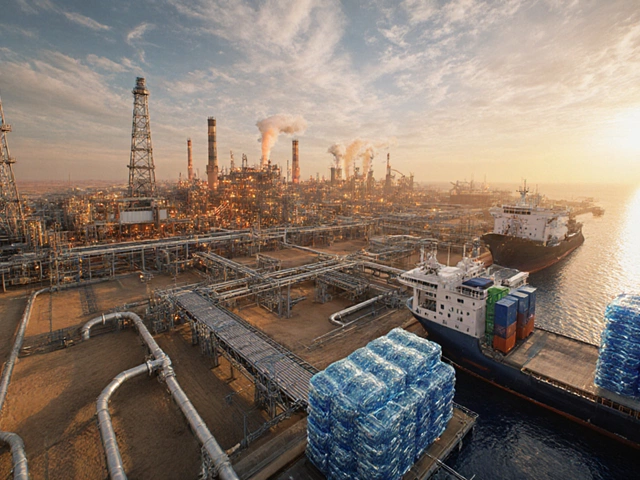Ever wondered where the steel holding up your home or car comes from? Well, you're about to find out. The US might surprise you with its vast network of steel manufacturing plants scattered across the country. It's not just about Pittsburgh's historical importance anymore; we've got some serious action in places like Alabama and California too.
Let's kick things off with a nod to the classic steel cities: Pittsburgh and Cleveland. These places have been in the steel game for what feels like forever, thanks to their proximity to rich iron ore deposits and easy river, and rail access for shipping. But what’s really fascinating is how these towns aren't just sitting on their historical laurels—they're modernizing and revving up their production game.
Down south, Alabama’s not just about sweet tea and country music. It’s emerging as a steel hub that's shaking things up. From auto manufacturing to construction, Alabama's got its hands in all sorts of pies, thanks to some significant investments in steel production.
- The Heart of Steel: Pittsburgh and Cleveland
- Southern Surge: Alabama and Beyond
- Western Expansion: California's Role
- Sustainable Steel: Leading Innovation
The Heart of Steel: Pittsburgh and Cleveland
So, let's talk about Pittsburgh and Cleveland—these two cities are basically the OGs when it comes to steel manufacturing in the US. Picture this: back in the day, Pittsburgh was producing almost half of the nation’s steel. And while it might not be cranking out at those astronomical levels anymore, it’s still a big player.
Pittsburgh's history is tightly woven with the story of Andrew Carnegie, who set up shop in the 1800s and built the steel empire that helped blast the US into the Industrial Age. His steel plants were some of the largest of their time and kind of redefined how steel production was done. Fast forward to today, U.S. Steel, headquartered in Pittsburgh, maintains a solid presence in the market.
Meanwhile, over in Cleveland, they’re not sitting idle either. Headlined by firms like Cleveland-Cliffs, this city holds its own with significant iron and steel production facilities. Cleveland’s steel is crucial for auto manufacturing in particular, with countless automobile parts starting their journey here before hitting roads nationwide.
Here's a cool fact: combined, these cities contribute significantly to the 60-70 million metric tons of raw steel the US produces annually. That’s a ton of material keeping the country’s infrastructure and industries running.
If you're into numbers, check this out:
| City | Notable Companies |
|---|---|
| Pittsburgh | U.S. Steel, Allegheny Technologies |
| Cleveland | Cleveland-Cliffs, TimkenSteel |
Historically significant and still buzzing with industrial activity, Pittsburgh and Cleveland aren’t just steel towns; they’re integral to maintaining the heartbeat of American manufacturing. There's a sense that no matter how advanced our technology gets, these cities will always have a place in the steel industry.
Southern Surge: Alabama and Beyond
When you think of steel making in the US, Alabama might not be the first state that pops into your mind. But let me tell you, it’s becoming quite the heavyweight in the steel manufacturing scene. This southern gem is home to some of the nation's most crucial steel plants, which are cranking out the material that ends up in everything from high-rises to your trusty refrigerator.
One of the big players in this region is Steel Dynamics, Inc., which has set up one of the world’s most advanced flat-rolled steel producers in Sinton near Mobile. Their mill isn’t just all shine and no substance; it’s a massive investment that's helping boost the local job market and economy. They’re turning out hot-rolled, cold-rolled, and coated steel products that are essential for various industries.
And it's not just about one company. Alabama's steel industry is really beefing up its capabilities with several other plants, like those owned by Nucor and U.S. Steel Corporation. These facilities are pivotal in enhancing the supply chain efficiencies across various sectors like automotive and construction.
Now, here's a fun tidbit. Did you know that the steel industry in Alabama has its roots as far back as the late 19th century? Thanks to the state's deposits of iron ore, coal, and limestone, it has long been a natural choice for steel production. The tradition continues with modern technological updates ensuring operations remain cutting-edge.
But wait, Alabama isn’t the only southern state ramping up its steel output. Arkansas and Mississippi are also joining the party, with new facilities and expansions that are spreading the benefits of steel manufacturing even further. It’s like the whole southern belt is uniting to become a steel powerhouse.
So, why is the south such a big deal now? The answer is pretty straightforward: logistics and energy. These states offer easy access to major highways, railways, and ports, which makes distribution a cakewalk. Plus, energy costs down here tend to be lower, which is always a win for heavy industries.
In essence, while you might have once thought of the south only for its sweet tea and hospitality, it’s high time you add steel production to that list. The region is not just upping its game; it's playing to win.

Western Expansion: California's Role
California isn't just about Hollywood and beaches; it's carving a niche in the steel industry too. With its strategic location on the Pacific coast, California serves as a key player in the ever-evolving American steel industry. From construction to tech, there's a demand for the quality steel produced right there.
One of the standout players is the California Steel Industries (CSI) plant in Fontana. This facility has been around since 1984 and has grown to be one of the largest producers of flat-rolled steel in the Western United States. They churn out hot-rolled, cold-rolled, and galvanized steel, which are used in a wide array of products like appliances and vehicles.
California's steel manufacturing isn't just about size—it's about sustainability too. Many Cali plants are keenly focused on reducing their carbon footprint. They use advanced technology to recycle steel scrap into new products, making sure that the plant operations are as green as possible. In the grand scheme of things, this helps reduce waste and energy consumption.
What's fascinating is how California's steel plants are leveraging renewable energy. Some have started incorporating solar panels to power parts of their operations. It's a neat trick that shows the intersection of old-school manufacturing and new-age green tech.
If you're wondering about the numbers, California's plants collectively contribute over 2 million tons of steel annually. That's a lot when you think about it, and it plays a significant part in meeting the demand not just in the state but on the national level too.
So, while the Sunshine State might be better known for tech and entertainment, it's quietly doing some heavy lifting in the world of steel manufacturing as well.
Sustainable Steel: Leading Innovation
The steel industry in the US is stepping up its game when it comes to sustainability, and it's pretty exciting. Imagine making steel that not only meets our needs today but doesn't mess up life for future generations. Sounds good, right? Modern plants are doing just that by using innovative tech to cut down on emissions and energy use.
Take Nucor, for example. They're one of the biggest steel producers in the US, and they're aiming to be carbon-neutral by 2050. How? They're investing in big solar energy farms and using recycled steel, which takes way less energy to convert compared to producing new steel.
Then there's the electric arc furnace (EAF) technology. Unlike traditional blast furnaces, EAFs use electricity to melt scrap steel, significantly reducing CO2 emissions. Companies like Steel Dynamics are making strong moves here, and it’s catching attention worldwide. Plus, they’re not just talking the talk; they're leading the charge in green steel initiatives and paving the way for others.
Also, let's not forget about smart manufacturing. It's not just a buzzword; it’s how steel plants are getting real-time data to boost efficiency and minimize waste. Imagine predictive maintenance, where machines tell you they need a fix before they break—like when your car warns you about low tire pressure.
With all these innovations, the future of steel production looks promising. Not only is it becoming more eco-friendly, but it’s also setting higher standards for the global market to follow. So the next time you see a steel structure, maybe you'll be reminded of this green revolution happening right before our eyes.











Write a comment